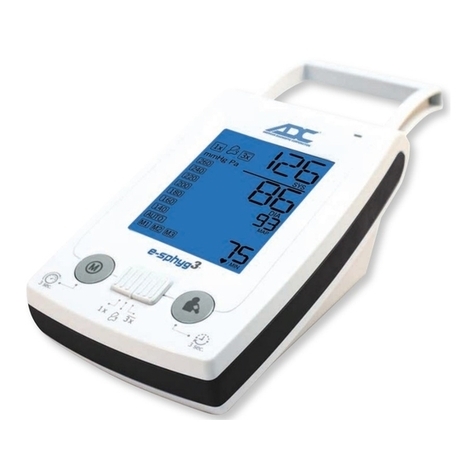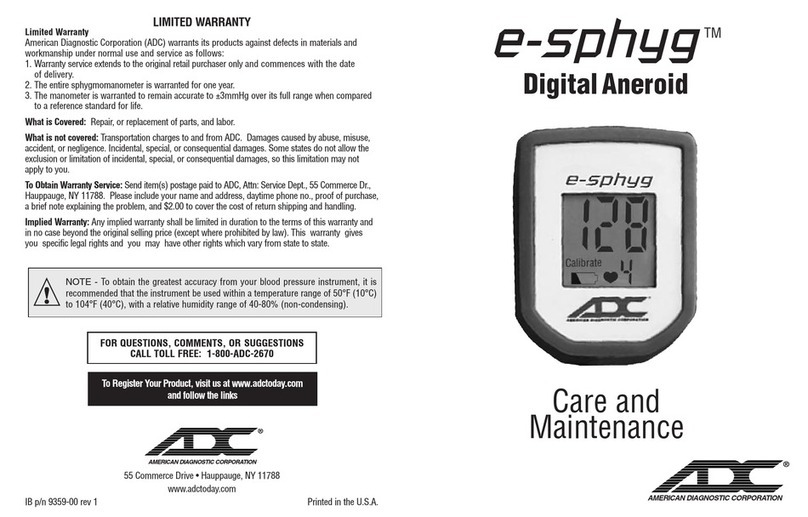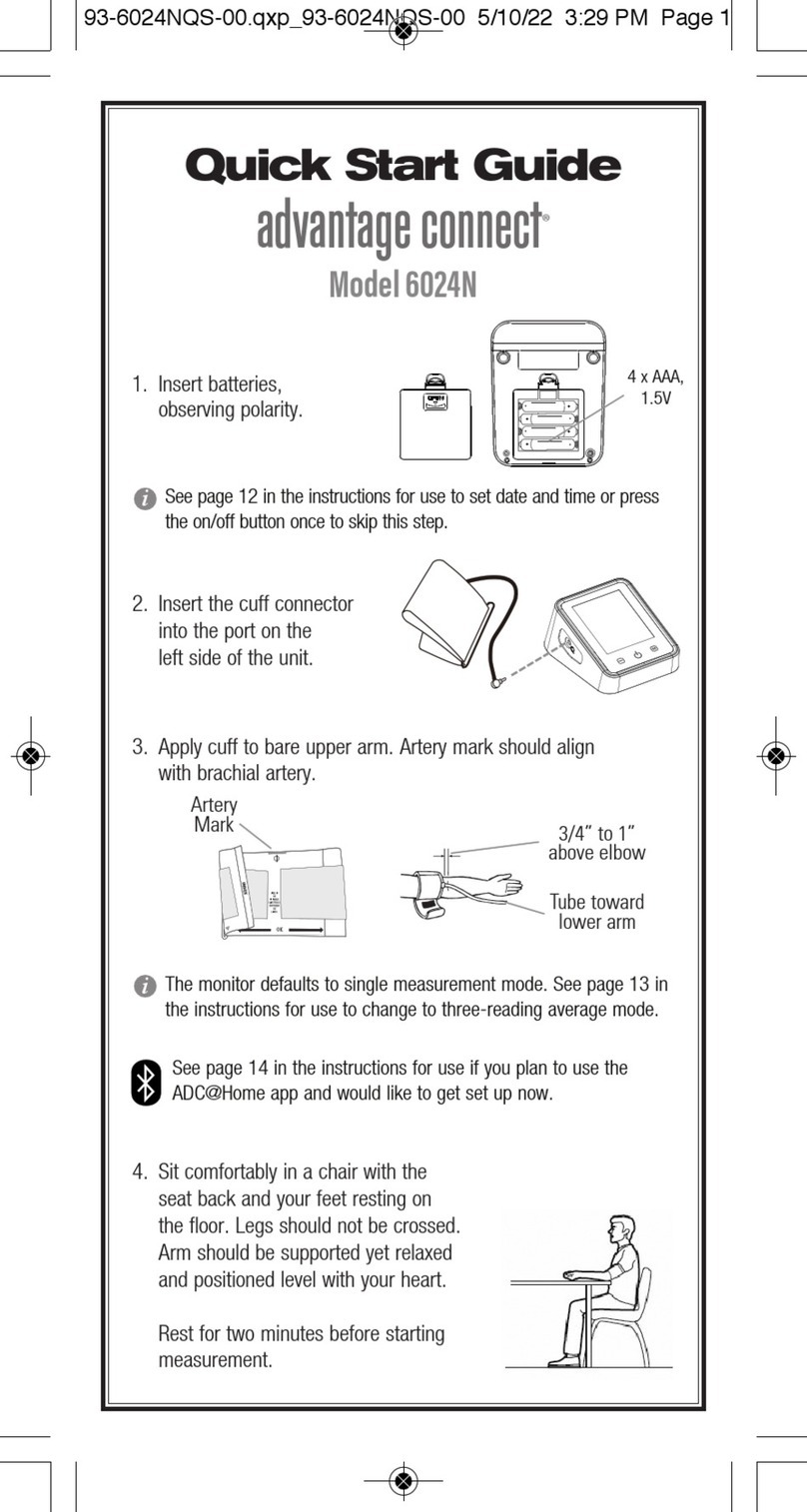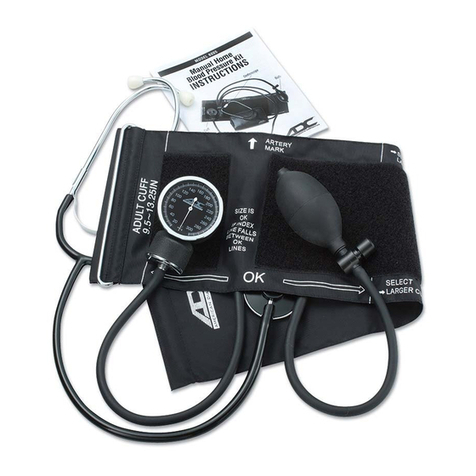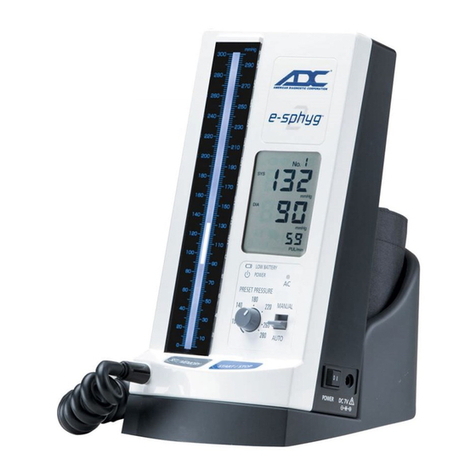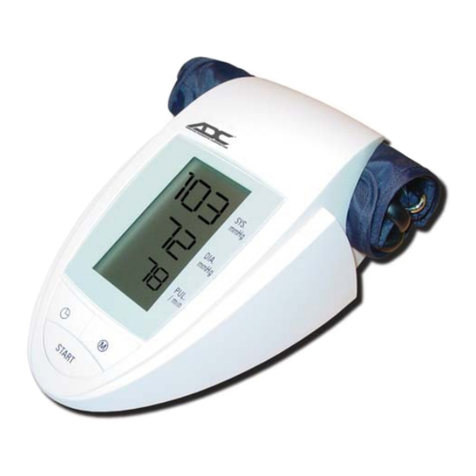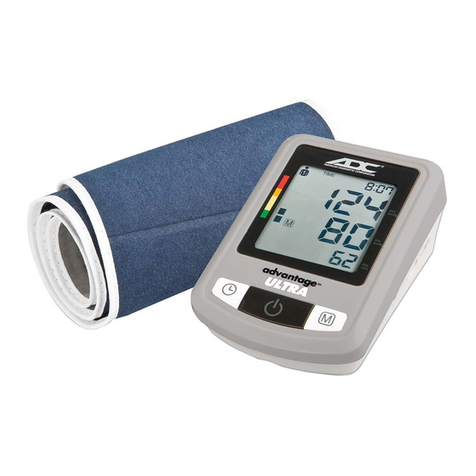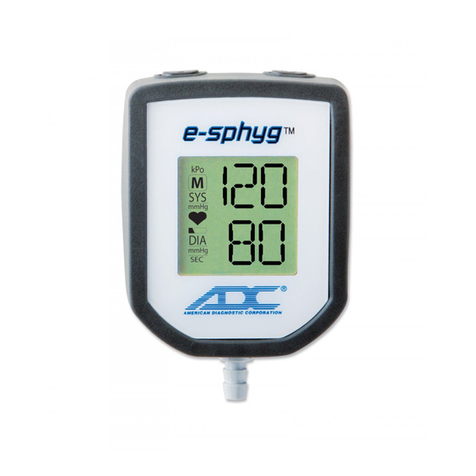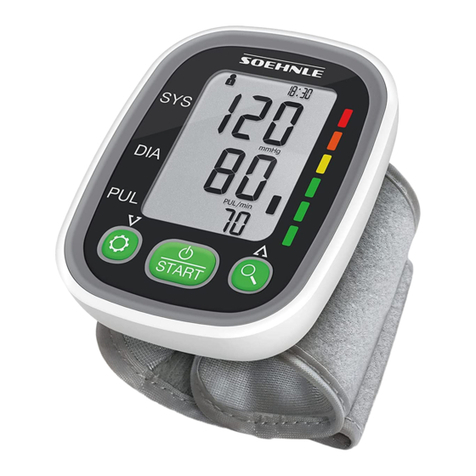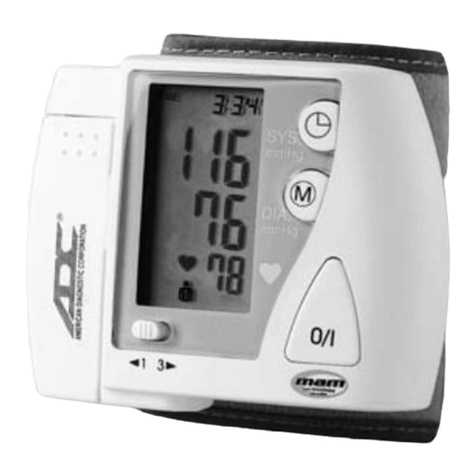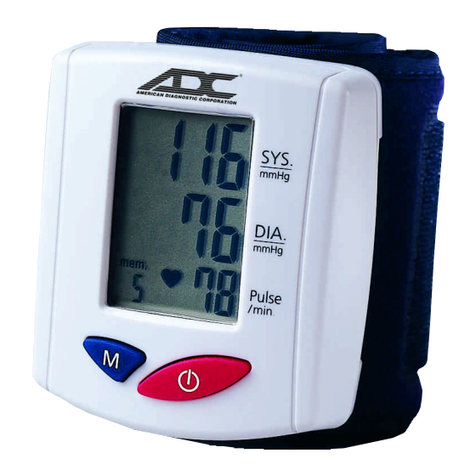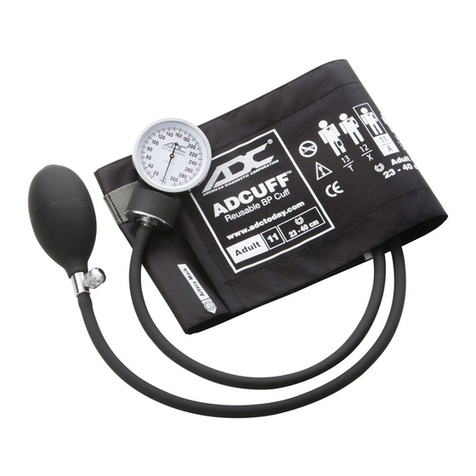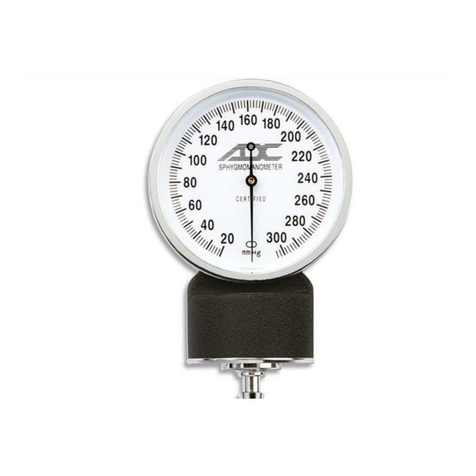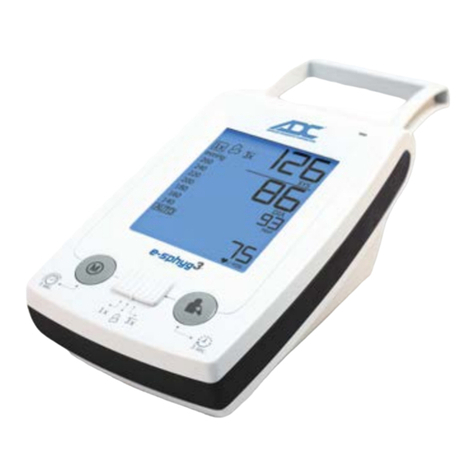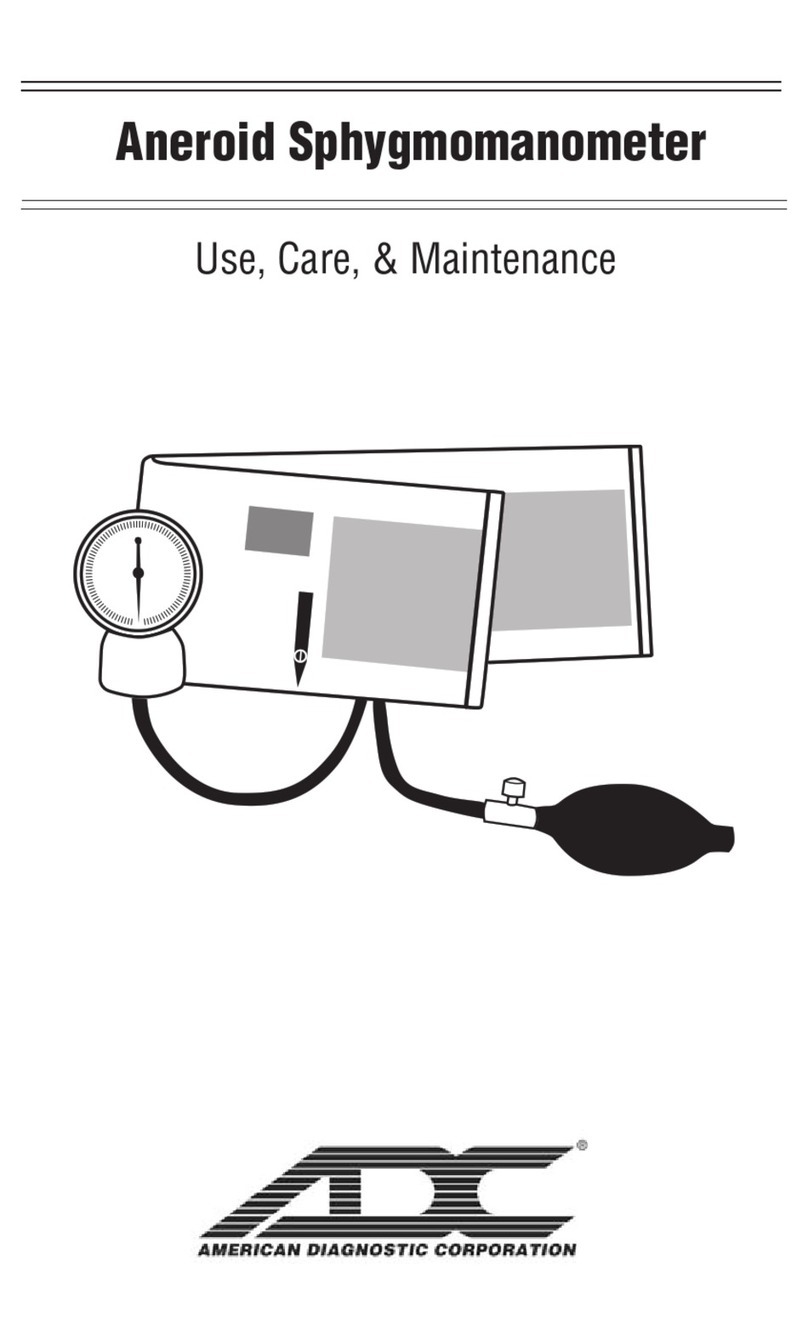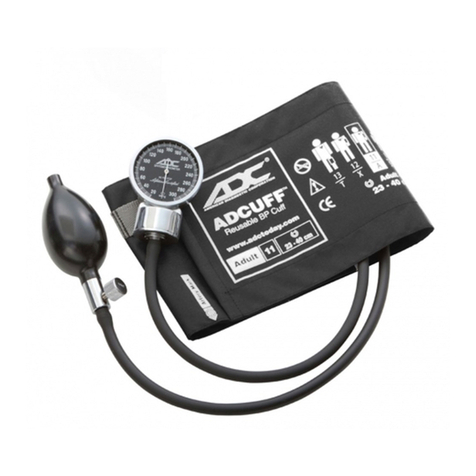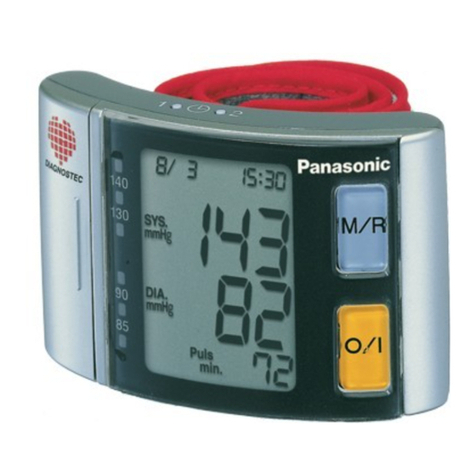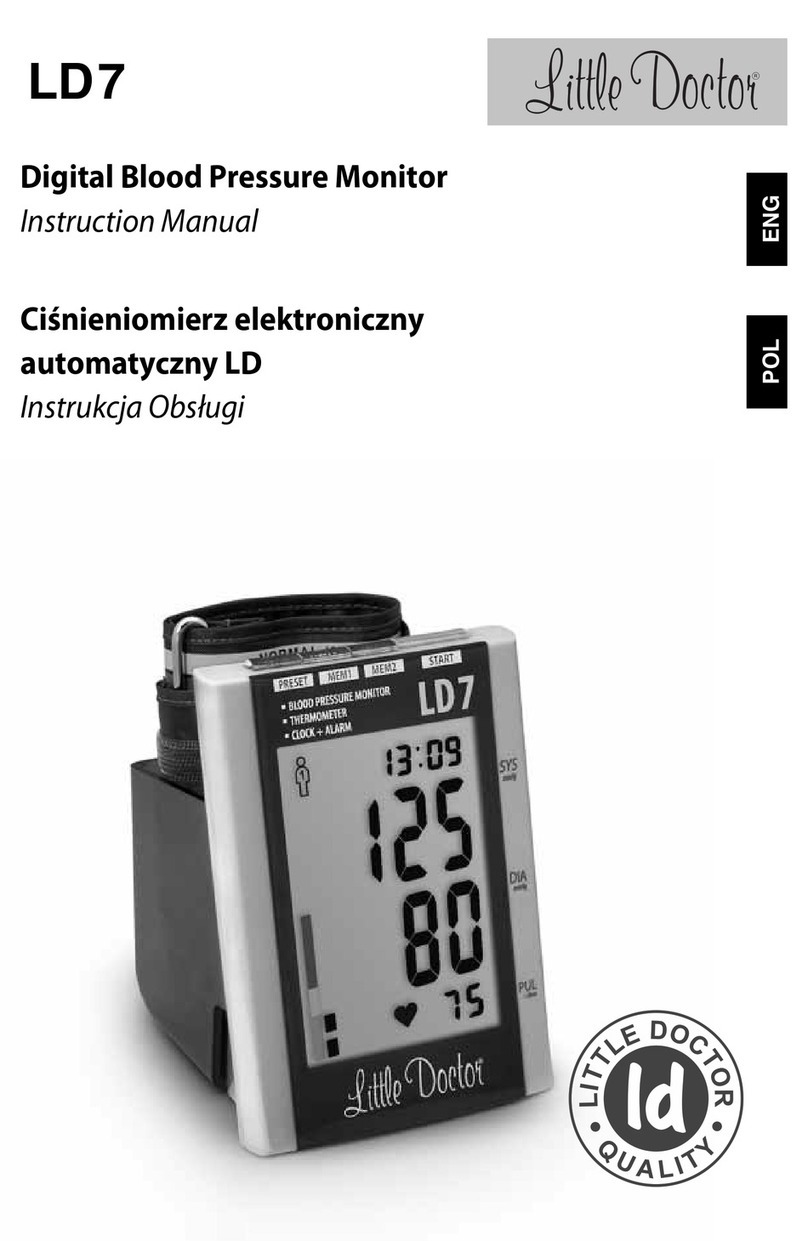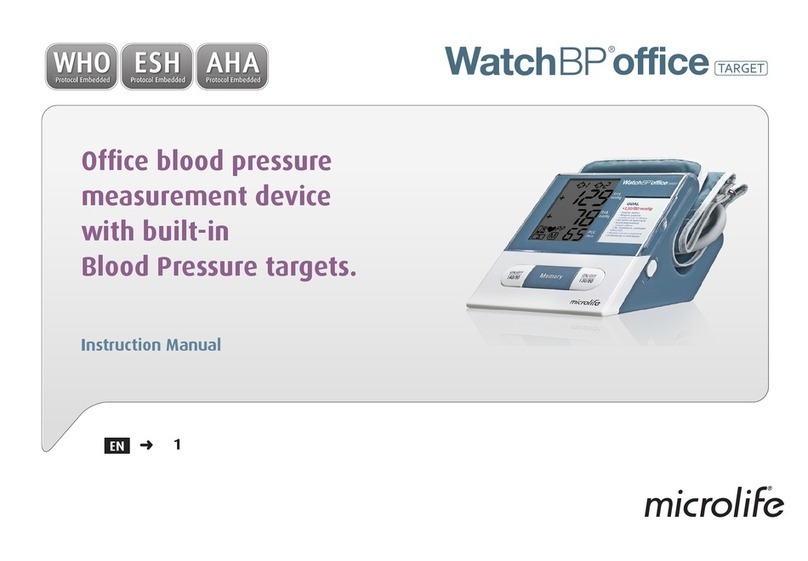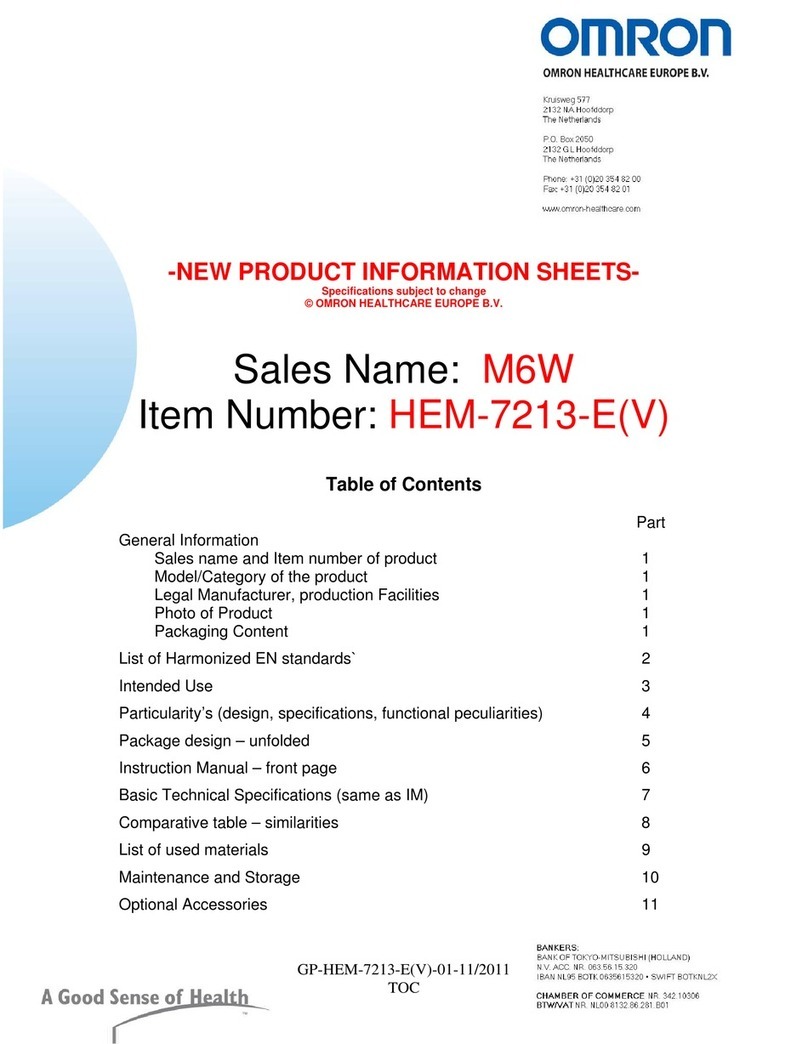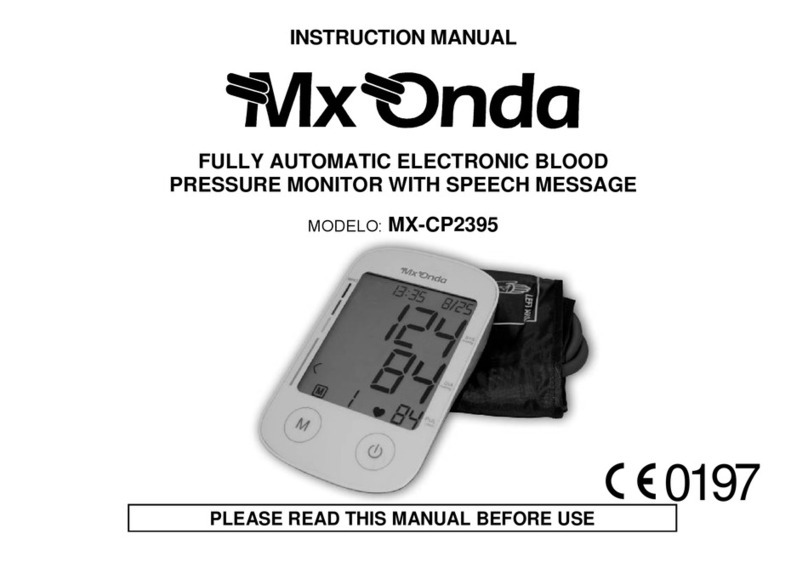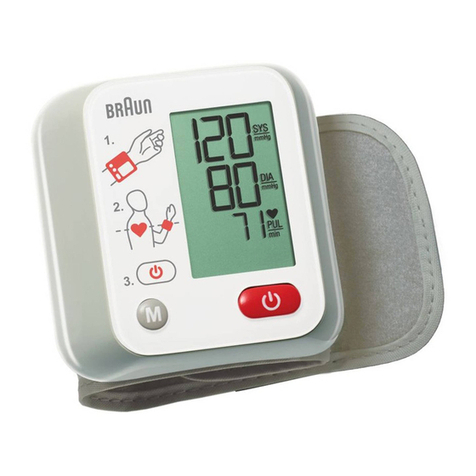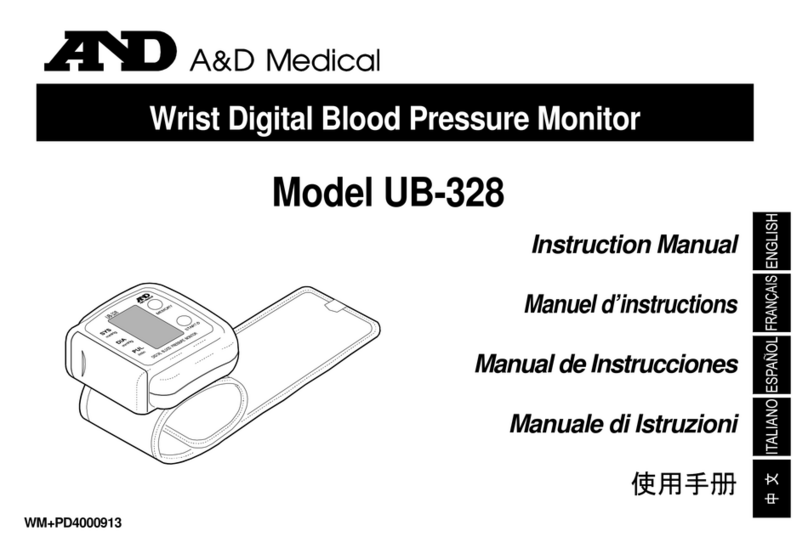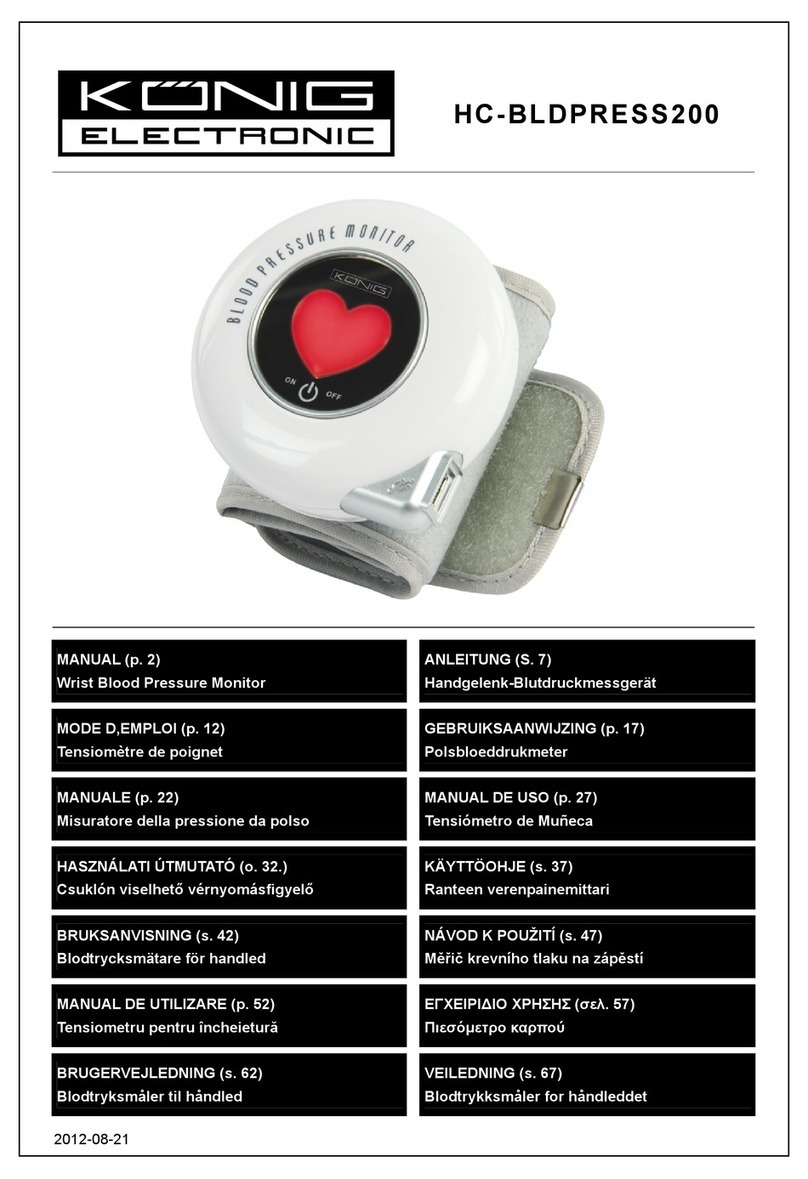Automatic Blood Pres sure Monitor - Instruction Manual
Table of contents
1. Introduction & Intended Use . . . . . . . . . . . . . . . . . . . . . . . . . . . . . . . . . . . . . . . . .4
Warnings & Precautions . . . . . . . . . . . . . . . . . . . . . . . . . . . . . . . . . . . . . . . . . . . .5
2. Important Information on Blood Pressure and its Measurement . . . . . . . . . . . . .6
2.1. How does high/low blood pressure arise? . . . . . . . . . . . . . . . . . . . . . . . . . . . . . . . . . . .6
2.2. Which values are normal? . . . . . . . . . . . . . . . . . . . . . . . . . . . . . . . . . . . . . . . . . . . . . .6
2.3. What can be done if regular high/low values are obtained? . . . . . . . . . . . . . . . . . . . . . . . .7
3. Components of your Blood Pressure Monitor . . . . . . . . . . . . . . . . . . . . . . . . . . . .8
4. Using your Monitor for the First Time . . . . . . . . . . . . . . . . . . . . . . . . . . . . . . . . . .9
4.1. Activating the pre-installed batteries . . . . . . . . . . . . . . . . . . . . . . . . . . . . . . . . . . . . . . .9
4.2. Setting the date and time . . . . . . . . . . . . . . . . . . . . . . . . . . . . . . . . . . . . . . . . . . . . . . .9
4.3. Cuff tube connection . . . . . . . . . . . . . . . . . . . . . . . . . . . . . . . . . . . . . . . . . . . . . . . . .10
4.4. Select the measuring mode: Standard or ADC®Averaging Mode Technology™ . . . . . . . . .10
4.5. Select the user . . . . . . . . . . . . . . . . . . . . . . . . . . . . . . . . . . . . . . . . . . . . . . . . . . . . .10
4.6. ADC®Averaging Mode Technology . . . . . . . . . . . . . . . . . . . . . . . . . . . . . . . . . . . . . . . . . . . .10
5. Measurement Procedure. . . . . . . . . . . . . . . . . . . . . . . . . . . . . . . . . . . . . . . . . . .11
5.1. Before measurement . . . . . . . . . . . . . . . . . . . . . . . . . . . . . . . . . . . . . . . . . . . . . . . . .11
5.2. Common sources of error . . . . . . . . . . . . . . . . . . . . . . . . . . . . . . . . . . . . . . . . . . . . .11
5.3. Fitting the cuff. . . . . . . . . . . . . . . . . . . . . . . . . . . . . . . . . . . . . . . . . . . . . . . . . . . . .12
5.4. Measuring procedure. . . . . . . . . . . . . . . . . . . . . . . . . . . . . . . . . . . . . . . . . . . . . . . .13
5.5. Irregular Heartbeat Detector . . . . . . . . . . . . . . . . . . . . . . . . . . . . . . . . . . . . . . . . . . . .14
5.6. Traffic Light Indicator (6023 Model) . . . . . . . . . . . . . . . . . . . . . . . . . . . . . . . . . . . . . .15
5.7. Memory - Displaying the last 99 measurements . . . . . . . . . . . . . . . . . . . . . . . . . . . . . .16
5.8. Discontinuing a measurement . . . . . . . . . . . . . . . . . . . . . . . . . . . . . . . . . . . . . . . . . .16
5.9. Setting the Medication Reminder . . . . . . . . . . . . . . . . . . . . . . . . . . . . . . . . . . . . . . . .17
5.10. Battery Charge Indicator . . . . . . . . . . . . . . . . . . . . . . . . . . . . . . . . . . . . . . . . . . . . . .18
5.11. Using the AC Adapter . . . . . . . . . . . . . . . . . . . . . . . . . . . . . . . . . . . . . . . . . . . . . . . .19
6. Software Functions . . . . . . . . . . . . . . . . . . . . . . . . . . . . . . . . . . . . . . . . . . . . . . . .19
6.1. Installation and data transmission . . . . . . . . . . . . . . . . . . . . . . . . . . . . . . . . . . . . . . . .19
7. Error Messages/Troubleshooting . . . . . . . . . . . . . . . . . . . . . . . . . . . . . . . . . . . . .20
8. Care and Maintenance . . . . . . . . . . . . . . . . . . . . . . . . . . . . . . . . . . . . . . . . . . . . .22
8.1. Accuracy test . . . . . . . . . . . . . . . . . . . . . . . . . . . . . . . . . . . . . . . . . . . . . . . . . . . . . .22
9. Warranty . . . . . . . . . . . . . . . . . . . . . . . . . . . . . . . . . . . . . . . . . . . . . . . . . . . . . . . .22
10. Certifications . . . . . . . . . . . . . . . . . . . . . . . . . . . . . . . . . . . . . . . . . . . . . . . . . . . .23
11. Technical Specifications . . . . . . . . . . . . . . . . . . . . . . . . . . . . . . . . . . . . . . . . . . .23
12. Contacts for Support. . . . . . . . . . . . . . . . . . . . . . . . . . . . . . . . . . . . . . . . . . . . . . .23
3
9. Garantía
Su monitor de presión ADC®tiene garantía de por vida contra defectos de fabricación válidos
para el comprador únicamente, a partir de la fecha de adquisición. La garantía no cubre daños
causados por mal uso, accidentes, uso profesional, el no seguimiento de las instrucciones de uso
o alteraciones hechas al dispositivo por terceras personas.
La garantía de por vida se aplica sólamente al instrumento. Todos los accesorios incluyendo la
brazalete, Adaptador de corriente alterna y cable USB tienen garantía por un año.
No contiene partes útiles para el ususario. Beterías o daños causados por baterías usadas no
están cubiertos por la garantía.
Nota: Conforme a las reglas internacionales, su monitor debe ser revisado para calibración cada
dos años.
10. Certificaciones
Regulación del dispositivo: Este dispositivo, para procedimientos no
Invasivos, està diseñado conforme a las reglas
de fabricación Europeas y de los Estados
Unidos de América:
EN1060-1 / 1995
EN1060-3 / 1997
EN1060-4 / 2004
AAMI/ANSI SP10
Compatibilidad electromagnética: Este dispositivo cumple con las estipulaciones
Internacionales IEC60601-1-2
Pruebas clínicas: Pruebas clínicas de funcionamiento fueron
llevadas a cabo en el Reino Unido.
“Associatión Protocol y British HTP
Protocol.”
Se ha utilizado el protocolo clínico de la B.H.S. British Hypertension Society (Sociedad
Británica de Hipertensión) para medir la presición de este producto. Las unidades ADC®utilizan
la misma tecnología calificada “AA” sistólica/diastólica por el protocolo BHS. Esta es la
calificación mas elevada que puede obtener un monitor de presión arterial. Por favor vea la página
de bhsoc.org para más información. (Utiliza el mismo algoritmo que el modelo BP3BT0-A con
calificación “AA”).
42
